I look back now, with joy and thanksgiving, for those few days in the Holy Land – the land Jesus trod, the paths he took that we took, the same landscapes we saw; we made the same journeys, we saw the same flowers and trees, but in profoundly different circumstances. As I reflect on our pilgrimage, I realise just how our time there was totally absorbing. This was where, 2,000 years ago, our redemption had taken place, and where we were now benefitting, by sharing in its fruits, together.
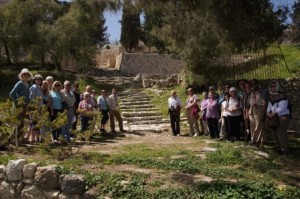 |
Jesus almost certainly trod these steps from the Last Supper to the Garden of Gethsemane. Later he came back the same way a prisoner of the soldiers to face his trial.
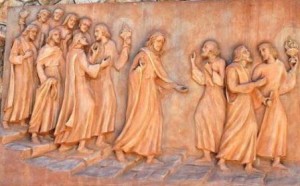 |
Jesus on the way to the Garden of Gethsemane on those same steps
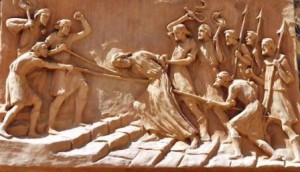 |
Jesus on the way back from the Garden of Gethsemane on those steps
As the first reflection pointed out, our pilgrimage experience was only heightened, by being part of a closely-knit group that grew in unity with each coming day; hour by hour, it was a joy to meet with each person, with all their differences and unique personalities; we tried to have Love, (or God), among us, for: “Where there is Love and Charity, there is God”, as we sing on Maundy Thursday, at the Mass of the Last Supper. The world of home, in Britain, was far away, not forgotten, but not impinging on us. Always, there was that ‘melting-pot’ of different religions, with the manifestly evident tensions between them, and these, coupled with the sights of powerful soldiers wielding their earthly authority, and many other factors, reminded me of the times of Jesus, those many years ago. I felt we had entered into that same experience, in our own way, and in our own time; it was a ‘life-giving’ experience yielding feelings that remain, even to this day, when I look back.
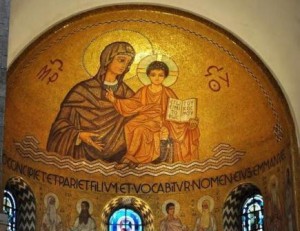 |
A Mosaic in the Apse of the Benedictine Church of the Dormition showing Mary and Jesus
On Wednesday, 21st March, we visited the Benedictine monastery of the Dormition, where a tradition has it that Mary, the Mother of Jesus, ‘went to sleep’ and rose, body and soul, into paradise. It is a lovely reserve of Benedictine life, in the middle of the Holy City.
Nearby, is the traditional site of the ‘Upper Room’, also called the ‘Cenacle’; that room is at the heart of our Christian faith, because the greatest events of Jesus’ life took place nearby the present ‘upper room’. Here is where the Institution of the Eucharist and of the Priesthood took place; it was here that Jesus washed the feet of his Apostles, and later, Jesus was to appear to them on that first Easter evening, spreading forth his peace, to all those present and beyond.
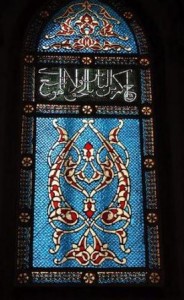 |
A stained glass window from the time this Upper Room was a mosque.
The present upper room is a 14th century ancient hall, rebuilt by the Franciscans, after previous basilicas and churches had been lost, in the ‘ups and downs’ of the violent history of the region. This very space was later used as a mosque, and there is a niche in the wall, indicating the direction of Mecca, the direction Muslims always face when they pray.
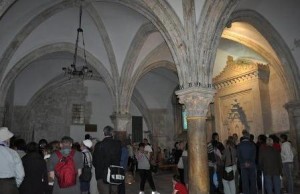 |
Site of the Upper Room as built by the Franciscans and modified by the Moslems
After visiting the tomb of King David, below the site of the Upper Room, we returned to Bethlehem where we had our own simple Mass in the Chapel of the Franciscan house, where we were staying, followed by our own ‘last supper’ in the Holy Land.
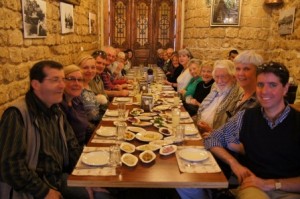 |
Our Last meal together was in Haifa in a very busy Palestinian Restaurant.
Our final day was spent at ‘one of the sites’ of Emmaus. The true location of the ‘original’ Emmaus of Jesus’ day remains a ‘burning’ question, but again, does it really matter? On the two visits to the Holy Land that I have enjoyed, we went to two different places for Emmaus. Both of them are special, and on both occasions, we felt the presence of the Risen Lord, in the ‘Breaking of bread’.
On this occasion, Mass was in the ancient ruins of a Byzantine Church, on which a Crusader Church was also built. It was in the open air, under a canopy, and on this occasion, we took turns to share our impressions of what the few days together had meant to us.
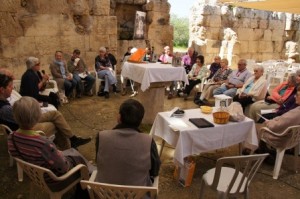 |
Mass at Emmaus on the Last Day – Sharing with each other
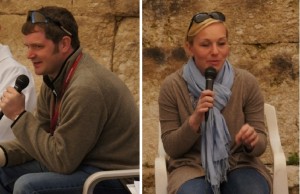 |
Many beautiful things were said, most of which I cannot remember. One saying I remember well: it came from an older person of our group, who pointed out, as you get older you think about the impending meeting with the good Lord, and it is often a sobering, and even fearful thought. But, she continued, coming on this journey ‘in the footsteps of Jesus’, she had seen what He had done, and what she had drawn from the experience, she had enjoyed; it was helping her to come to terms with what would happen to her, one day.
In St. Luke’s account about Emmaus, Cleopas and his companion recognised Jesus, when he took the bread, blessed and broke it, and gave it to them:
“Then their eyes were opened and they recognised him and he vanished from their sight. They said to each other, ‘Were not our hearts burning within us while he was talking to us on the road, while he was opening up the scriptures to us?’”
In 1964, Chiara Lubich wrote something that is very appropriate, and perhaps, echoes the experience we all enjoyed:
“The presence of Jesus in our midst brings light, warmth, decision, strength, which all come when we have him among us. This is the burning (expressed in human terms) of our heart within us, it’s the supernatural that burns within us.”
NOTE: We hope to have a gathering of those interested, to see some more slides of our Holy Land visit of March 2012, on Friday 29 June 2012, at 7.30pm, in Leyland at our Priory Parish Centre. All the pilgrims are welcome, as well as any parishioners, or friends who would like to attend. We will have some refreshments available, and a chance to comment and to share impressions, from those who went on the pilgrimage “In the Footsteps of Jesus”.
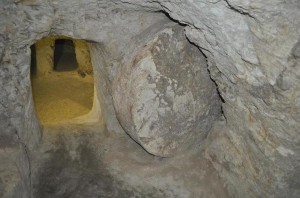 |
“He is Risen, He is not here”. He is with you, wherever you are, when you live his ‘Words of Life’.
Receivers of this blog by email will find the formatting disrupted. To view and read in the orginal format, please go to the main website.
